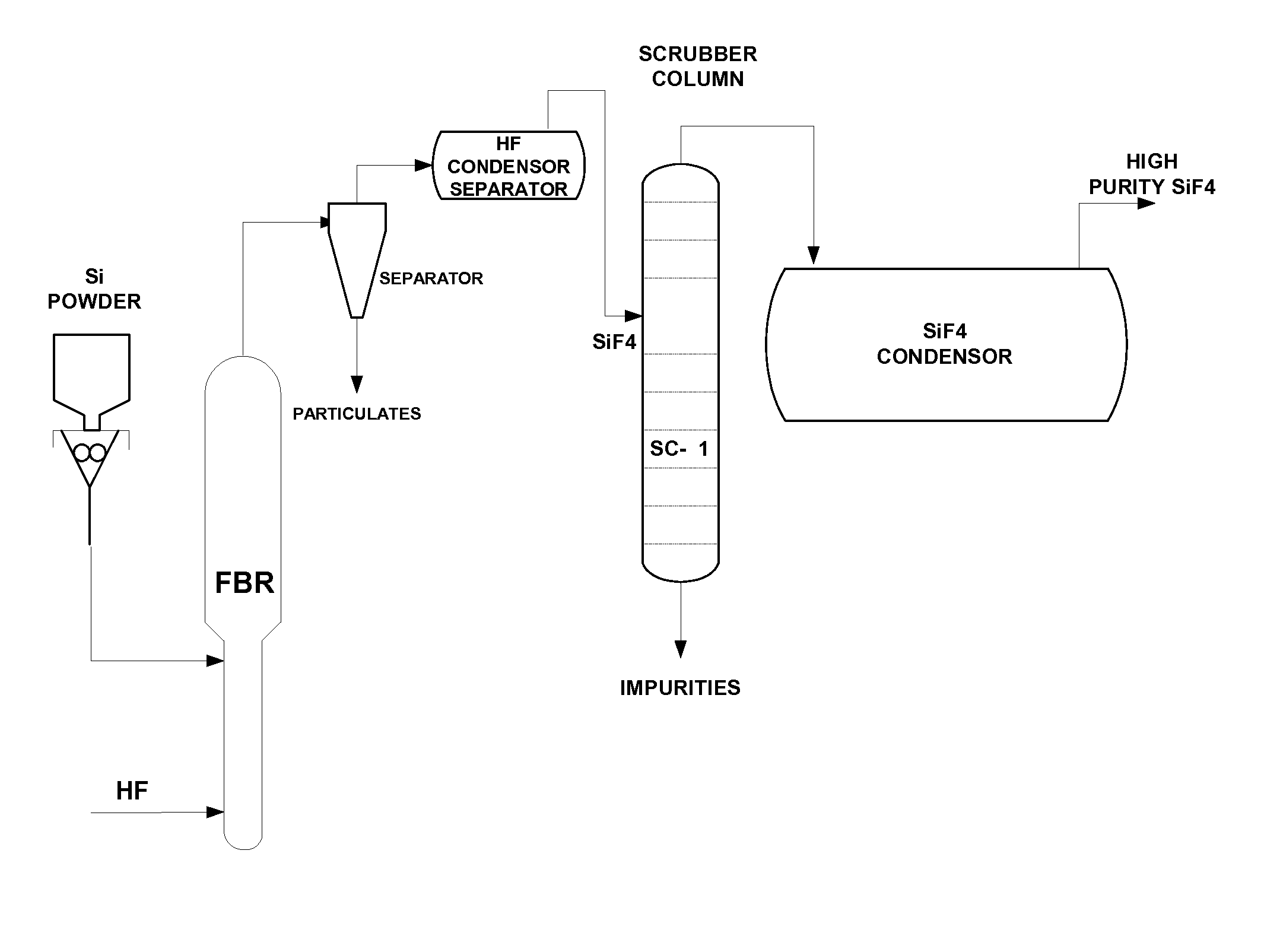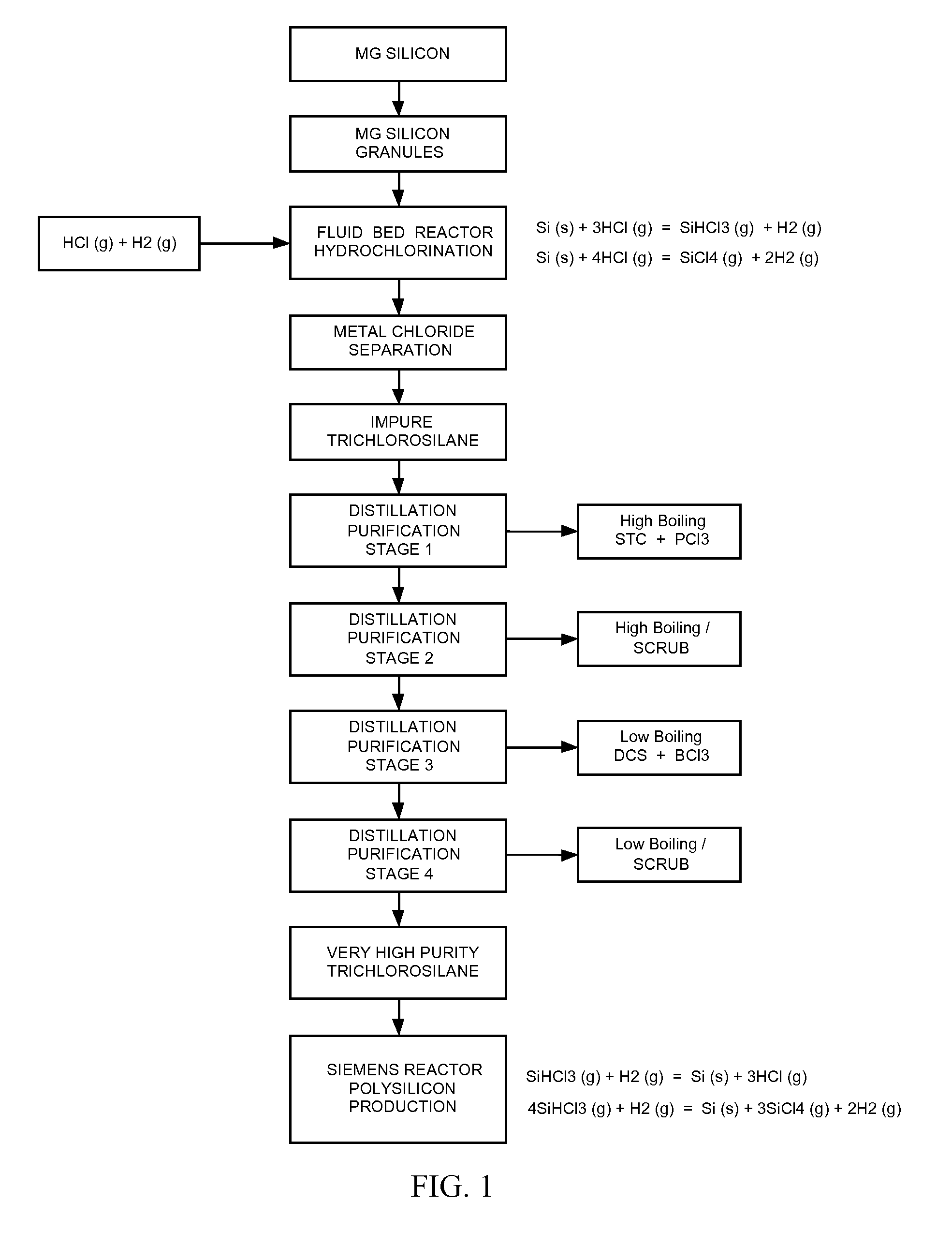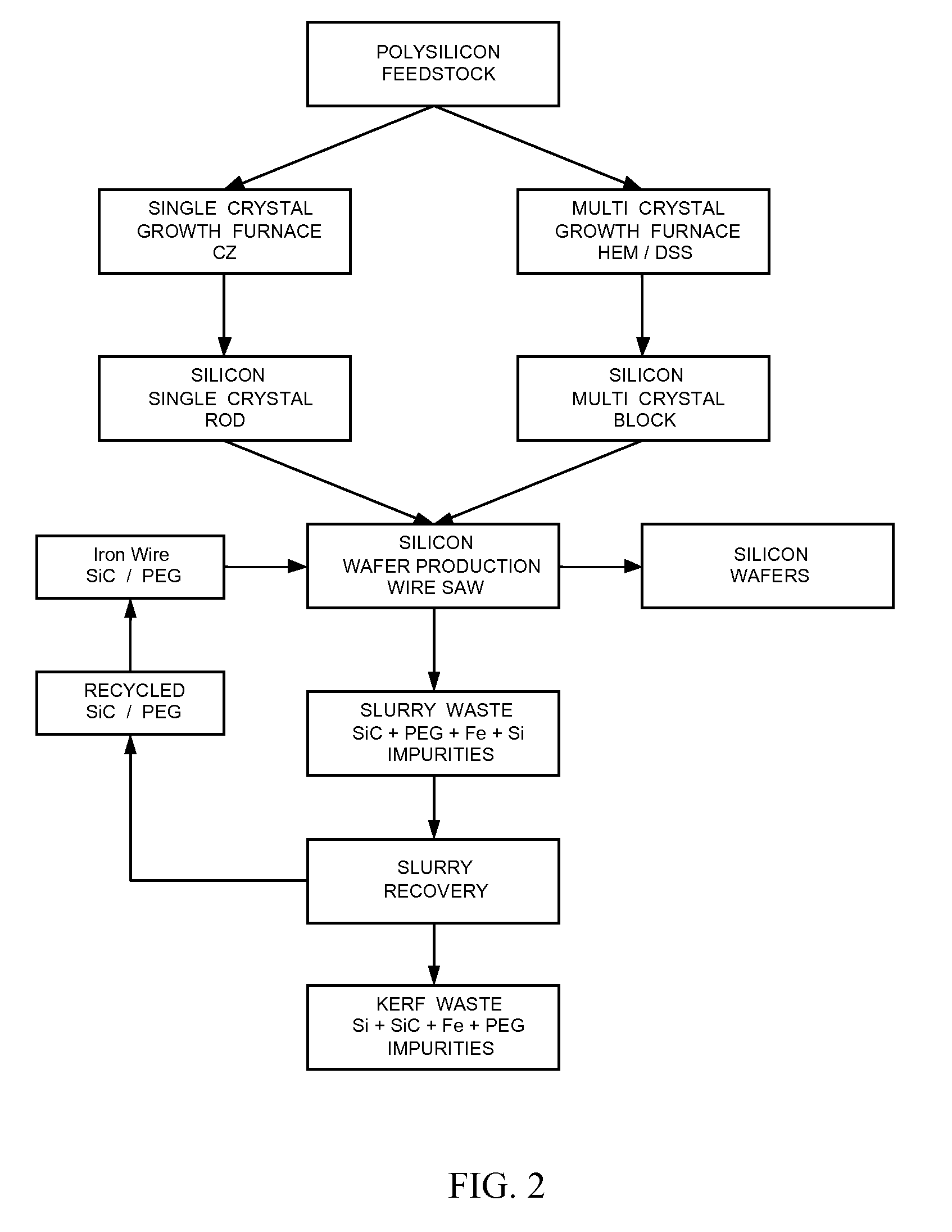Method to convert waste silicon to high purity silicon
a technology of waste silicon and high purity, applied in the direction of halogenated silane, silicon compounds, manufacturing tools, etc., can solve the problems of low purity (98%-99%) of materials, high energy consumption, and waste of resources, and achieve high purity polysilicon at competitive costs, industrially practical and cost-effective, and robust
- Summary
- Abstract
- Description
- Claims
- Application Information
AI Technical Summary
Benefits of technology
Problems solved by technology
Method used
Image
Examples
Embodiment Construction
[0079]A process for the recovery of silicon from a silicon fabrication or manufacturing process is described that provides silicon of a desired purity with minimal to low post-recovery purification. The method includes providing high purity silicon solids from a silicon manufacturing process, the silicon solids being substantially free of semiconductor dopants; converting the silicon solids into gaseous silicon forms; and collecting the gaseous silicon forms as a condensed liquid of a silicon-containing compound. The conversion step to gaseous silicon forms substantially removes impurities admixed with silicon in the waste from the fabrication or manufacturing process. The gaseous silicon forms may be used appropriately or eventually converted to polysilicon. The silicon can be of a purity suitable for solar [e.g., >99.999 wt % Si] or electronic [e.g., >99.99999 wt % Si] applications.
[0080]Silicon manufacturing processes generate huge amounts of silicon powder waste, which can be re...
PUM
| Property | Measurement | Unit |
|---|---|---|
| mean particle size | aaaaa | aaaaa |
| semiconductor | aaaaa | aaaaa |
| volatile | aaaaa | aaaaa |
Abstract
Description
Claims
Application Information
 Login to View More
Login to View More - R&D
- Intellectual Property
- Life Sciences
- Materials
- Tech Scout
- Unparalleled Data Quality
- Higher Quality Content
- 60% Fewer Hallucinations
Browse by: Latest US Patents, China's latest patents, Technical Efficacy Thesaurus, Application Domain, Technology Topic, Popular Technical Reports.
© 2025 PatSnap. All rights reserved.Legal|Privacy policy|Modern Slavery Act Transparency Statement|Sitemap|About US| Contact US: help@patsnap.com



